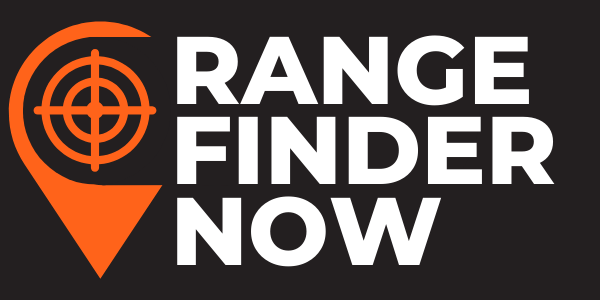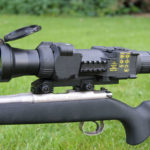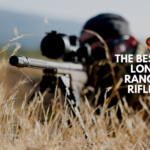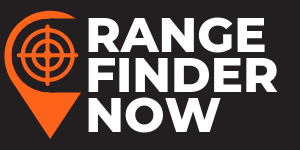There’s nothing quite like a truly good hunting dog. Other forms of hunting are enjoyable and sporting, but the ability to share one’s hunting adventures and accomplishments with a loyal and devoted hunting dog are invaluable.
For those of us who love hunting with dogs, there is something special about going afield with your dog. Great hunting dogs have an insatiable desire to hunt and a relentless effort to please their master. Seeing them in action is almost as fun as the hunt itself.
Training a pheasant hunting dog is relatively simple, but it requires consistency and hard work. In this article, I’ll list some of the keys to training a great bird dog and how you can get started with your own dog. Great hunting dogs don’t happen by chance—they are made through countless hours of training and building upon the basic foundations of what makes a good hunting dog.
How to Train a Pheasant Hunting Dog
Remember, when you first start training a pheasant hunting dog it will take a little time. Be patient and enjoy the process.
First, and Foremost
Good pheasant hunting dogs usually have a natural tendency to be inquisitive and hunt hard. This is something that can’t really be taught to the dog and is preferred by dog trainers and pheasant hunters.
But, an inclination to hunt is not enough to train your pheasant hunting dog to become a great hunting dog. The most important thing you can instill in your pheasant hunting dog is obedience.
A dog that has boundless energy and a will to hunt is worth little in the field without unwavering obedience to his master. A great hunting dog will—with the right training—develop a strong desire to please his master that will drive him as much as his desire to hunt.
I’m a firm believer that a dog can sense positive or negative energy coming from their master. The dog’s training will flourish, or falter, based on how you treat him and the methods you use.
Being overly harsh and punishing the dog at the wrong time will cause them to develop an unhealthy fear of you, which is not productive in the hunt. Begin training your dog with the mindset that you are helping to raise a great hunting companion that will share in your joy for hunting and being afield.
One of the best pieces of advice I ever received from a bird dog trainer was this:
“If you ever get mad at your dog while training, take him home and put him up for the day. You won’t teach him anything useful if you’re angry at him.”
So, begin training your dog with the right, positive mindset. Also, you should be feeding and caring for your dog as best as you possibly can. Never skimp on things like proper food and medicines and kennel conditions. Treat your dog well, and he’ll treat you well.
First: Get to Know Your Pup
You can’t begin to train your pheasant hunting dog from Day 1. First, you’ll need to start developing a relationship with your dog. Simply put, you and your dog should get to know one another.
Dogs, like humans, are unique and have their own personalities and characteristics. You’ll learn more about him the more you train your pheasant hunting dog, but you should start out by spending as much time with your dog as you can.
I won’t recommend a specific amount of time you need to spend with your dog each day or each week because the truth is that you really should spend as much time as you can with him if you intend to develop a great pheasant hunting dog.
A hunter who is too busy to spend time with his dog every day is a hunter that doesn’t have any business training a dog.
Keeping the dog in a kennel and only taking him out to train is a serious mistake. Your dog needs to get out and be active. Take him for walks and let him run around in the field. This will help him realize that when he’s with you, he should expect to match your level of inquisitiveness. After all, what’s the use in having a dog if you can’t have fun with him everywhere you go.
Related: Pheasant Hunting Gear Guide
Second, Be The Alpha
Dogs are pack animals by nature and will follow a strong leader. Your dog should quickly realize that he is not the master and that insubordination will not be tolerated.
For some people, the best way to gain insight on how to behave as a pack leader is to spend time with someone who has a knack for training good hunting dogs. You should quickly notice that they all have one thing in common: confidence.
It is said that dogs can sense fear, but it should also be noted that dogs can sense insecurity just the same. If your dog picks up on the idea that they can misbehave and get away with it, it will begin a downward spiral that will turn into a useless hunting dog.
One way to sum up this point is this: When training your pheasant hunting dog, don’t “hope” that he gets it right, but rather “expect” him to properly carry out your will.
There is No Substitute for the Real Thing
When your dog is still a young pup, maybe three or four months old, start him out with a real pheasant. How do you get a young pup close to a live pheasant? Well, the short answer is that you don’t.
I like to take a pheasant wing and tie it securely to the end of a fishing line. When you get your dog out of the kennel and take him for a walk, be sure to introduce him to the sight and smell of a pheasant (even if it is only a wing from a dead bird).
Bounce the wing around and let the dog get excited by the sight and scent of the object. This will spike his curiosity and he’ll be on the lookout for that same sight and smell when he’s roaming around or on a walk with you.
Before you know it, you’ll have a dog that’s looking for pheasants and trying to figure out how to get better at finding them. Once he begins to catch on to the fact that a live pheasant is the true prize, this is when he will really start to grow as a pheasant hunting dog.
Verbal Commands
One of the most basic fundamentals that any dog can learn is verbal commands. It is said that some languages, such as German, are ideal for training dogs because of their short and direct nature.
Your verbal commands need to be clear and concise. Trying to talk to your dog like you would a human is counter-productive as they will not pick up on specific verbal queues associated with the actions you want them to take.
Make sure that the verbal commands you give your dog stay the same. Consistency in your volume and tone, as well as the specific words you use, to the dog will help him pick up on the actions you want.
It’s also important to make sure that your different verbal commands do not sound the same. Remember, these commands need to be short and clear so that you can get through to the dog while he’s experiencing the adrenaline rush that goes along with the hunt.
Let the Dog Enjoy Himself
Whether you’re hunting or training your dog, it’s important to nurture the sense of enjoyment you and he should get from your time in the field together. If working with your dog begins to feel like a chore, you need to step back and do some soul searching and figure out just what it is that you want out of this dog.
I have never met a bird dog that didn’t enjoy hunting. It comes as natural to them as breathing and a trainer that helps feed this sense of enjoyment is one that can develop a truly exceptional pheasant hunting dog.
What subjects did you do best at when you were in school? The short answer is that you excelled in the subjects you enjoyed most. Dogs are no different in how they learn. When they’re having fun, they are in the best mental state to learn and do well.
Let the dog know when you’re displeased with him, but never be too harsh to the point that your dog develops an unhealthy fear of you. Likewise, you should also let your dog know when you are pleased with him.
As I stated earlier, dogs have a peculiar ability to sense a person’s energy. When you’re happy with what he’s done, he will quickly pick up on this and it will help him learn to do it again and again.
Time in the Field is the Best Investment in Your Dog
There is nothing as valuable when it comes to training your pheasant hunting dog as time in the field hunting actual pheasants. As your dog grows older and begins to mature, you’ll be able to see him learn more and more in the field.
Your commands and methods should be consistent so that the dog has no problem understanding what your intent is when you’re in the field hunting pheasants.
There is no substitute for the real thing, right? Well, a dog will best learn what to do—and also what not to do—based on your interaction with him in the field.
Patience is Key
Remember to be patient with your dog when you’re in the field. Some hunters become overly focused on killing pheasants and can be frustrated when a dog busts a bird too early or roams a bit too far.
Throwing out too many verbal commands during your in-field training will have an adverse effect on your dog as he will grow accustomed to hearing you bark at him and assume that your words aren’t meaningful. Losing your temper is not an effective teaching tool. The less commands you give him, the better.
Trust and Consistency
Once you’ve developed a healthy relationship with your dog in which he understands your intent and exactly what his job is, it’s important to simply allow him to carry out his orders without too much interference.
Be sure to let him know when he’s done well, and also to correct him when he makes mistakes, but don’t be too harsh.
The best way for a dog to learn to become a good pheasant hunting companion is to take him pheasant hunting. Don’t be too fixated on the nuts and bolts of training your dog and forget the overall goal—to nurture his instinctual desire to hunt and please his master.
Related: How To Pheasant Hunt: A Complete Guide
Conclusion
That’s basically everything you need to know about training a pheasant hunting dog! As I said earlier, you have to enjoy the process to reap the rewards. Good luck and happy hunting!








